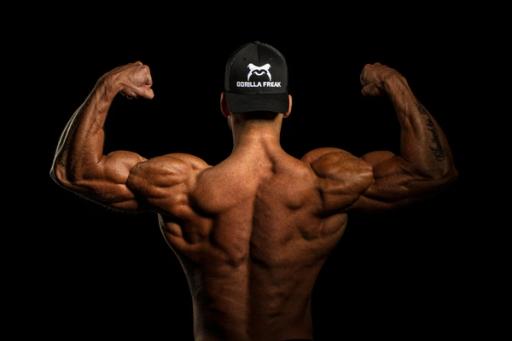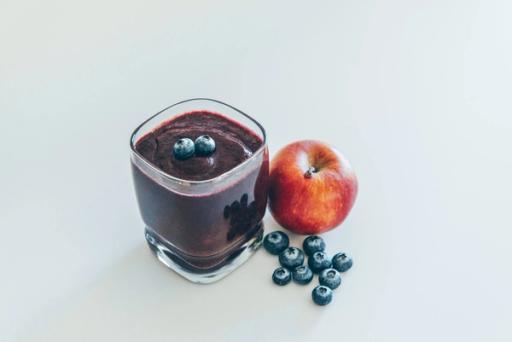
When it comes to bodybuilding, calorie intake is critical. Too few calories can leave you sluggish and prone to injury, while too many can quickly pack on unwanted body fat. So, exactly how many calories do bodybuilders eat? This article will answer this question and help you understand How Many Calories Bodybuilders Eat. Knowing exactly how many calories to eat to maximize muscle growth, minimize fat gain, and create a sustainable nutrition plan tailored to your bodybuilding goals can be a game changer for your training and physique. So, how are calories measured?
Cal AI's calorie tracker makes it easy to achieve your bodybuilding goals. It will help you understand exactly how many calories you need to pack on muscle while minimizing fat gain and create a sustainable nutrition plan tailored to your specific targets.

Bodybuilding isn’t just a sport. It’s a lifestyle, and a big part of that lifestyle is paying close attention to your nutrition, especially your calorie intake. Why? Because calorie intake varies based on many factors, including:
Here’s the breakdown of calorie intake for bulking and cutting phases and how to figure out what’s right for you.
A small study of 47 male and female bodybuilders published in the Journal of the International Society of Sports Nutrition in August 2019 notes that bodybuilding has two seasons: an off-season and an on-season.
The off-season is known as the bulking phase, which aims to gain as much muscle as possible. This phase can last for months—or sometimes even years—and is characterized by a high-protein and high-calorie diet. The on-season, the cutting phase, leads to professional bodybuilding competitions.
Unlike powerlifting competitions, where competitors are judged on their strength, bodybuilders are judged based on their aesthetics, which includes factors like:
The on-season involves a high-protein, calorie-restricted diet with resistance training and aerobic exercise. The aim of this phase is to reduce body fat without losing muscle mass, helping bodybuilders showcase their physiques. Once the competition is over, bodybuilders revert to an off-season diet and exercise regime known as the recovery phase.
The number of calories you need daily depends on how many calories you burn through exercise. Depending on whether you're in a bulking or cutting phase, you can adjust your calorie intake accordingly. According to the ACE, the rule of thumb is that 500 calories per day for a week equals 1 pound of body weight.
So, if you're in a bulking phase, for example, and want to gain muscle mass at 1 pound a week, you need to increase your calorie intake by 500 calories per day for a week. If you're in a cutting phase and want to lose 1 pound a week, you need to decrease your calorie intake by 500 calories per day for a week. Remember the type of calories you consume and the amount of resistance training you do is also necessary.
The ACE recommends that people trying to gain body weight don’t use their increased calorie budget on energy-dense, fattening foods and ensure that they're doing enough resistance training to convert the additional calories into muscle; otherwise, the body will store them as fat.
Another study published in the Journal of the International Society of Sports Nutrition in May 2014 recommends that bodybuilders don't gain or lose more than 0.5 to 1 percent of their body weight per week. This helps ensure you don't gain too much fat during the off-season bulking phase and don't lose too much muscle during the on-season cutting phase. So, for a 200-pound person, that works out to 1 to 2 pounds a week.
The same study found that the bodybuilders consumed significantly fewer calories during the cutting phase. Women, on average, ate only 1,200 calories per day to lose fat, while men consumed 2,400 calories.
Calorie adjustment is opposite to the bulking phase in the cutting phase. Calorie intake is approximately 10% to 20% below the number needed for weight maintenance. If your weight maintenance is 2,000 calories per day, you can reduce it to 1,700 for cutting.
Gaining, losing, and maintaining weight requires careful calculations. As your weight changes, you will need to recalculate your daily intake. Your maintenance calories will also change as your weight goes up or down.
For instance, you may start your bodybuilding journey with a maintenance calorie intake of 2,000, but by the time you reach the maintenance phase, it could be 2,500. Reassess monthly for the best results.

Whole, nutrient-dense foods help bodybuilders pack on muscle and recover after workouts. These foods are rich in vitamins, minerals, antioxidants, and other compounds that promote health and performance.
For instance, leafy greens and colorful fruits and vegetables contain phytonutrients that reduce exercise-induced inflammation and boost recovery. Other foods, like fatty fish, have anti-inflammatory properties and help the body recover after intense training. Sustainable diets with variety and balance help bodybuilders build muscle and recover without extreme dieting, which can lead to:
In addition to calorie counting, bodybuilders pay careful attention to what they eat and the ratio of macronutrients in their daily diets.
Protein is essential for building muscle and a significant target area in bodybuilders’ diets. Most people can get away with consuming about 15% to 20% of their daily calories as protein, but bodybuilders need more. This is especially true during the bulking phase. Bodybuilders eat between 1.8 and 2.2 grams of protein per kilogram of body weight. This amounts to up to 30% of daily calories.
During cutting, you need more protein, up to 2.5 grams per kilogram. This helps prevent muscle loss while in a calorie deficit. Eating too much protein at once can be counterproductive, so many bodybuilders spread it out, eating six or seven smaller meals daily. The best sources of protein for healthy muscle building are lean.
Choose a variety of:
A protein powder is another option. A protein shake is convenient when you're on the go and need an extra calorie and protein boost. Plus, they're available in various protein options, such as whey or casein. Make sure your clients understand that there is such a thing as too much protein.
Excessive protein intake can stress the kidneys, which is dangerous. It’s not a bad idea to have a bodybuilding client get a meal plan from a registered dietician or nutritionist to be sure they’re doing it safely. This is a good general protein guide for any of your clients wondering how much protein they should eat, whether focused on:
During bulking, carbohydrates comprise the most significant proportion of calories, between 45% and 60%. To put on weight and recover from workouts, you need carbs. Most bodybuilders take this number down a little for the cutting phase. Increasing protein and decreasing carb calories are better for weight loss without muscle loss. Aim for primarily non-refined, whole grains and low-glycemic index foods for your carbohydrate intake in any phase.
Some good choices include:
The proportion of fats in a bodybuilder's diet is the remainder of calories after accounting for protein and carbs. If you precisely calculate those two, fats should fall into place. Limit saturated fat and focus on healthy fats, like:
Cal AI transforms calorie tracking with cutting-edge AI technology. Just snap a photo of your meal, and we'll do the rest.
Our app combines your phone's depth sensor with advanced AI models to:
With 90% accuracy on visible foods and multiple tracking options like:
We've made nutrition tracking effortless. Whether you're scanning a full meal or a quick snack, Cal AI
Our AI learns from your feedback to improve accuracy. It includes personalized insights and smart reminders to keep you on track. Cal AI makes achieving your fitness goals simpler than ever. Track your calories with your camera using Cal AI's calorie tracker today!